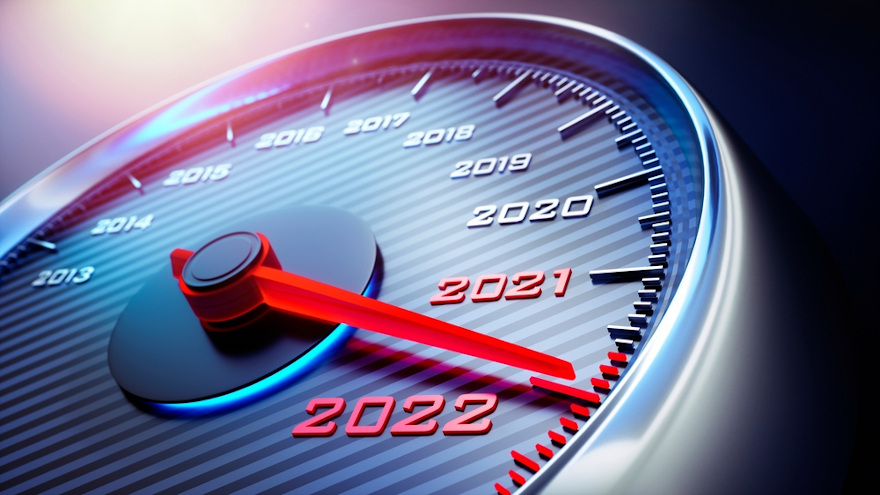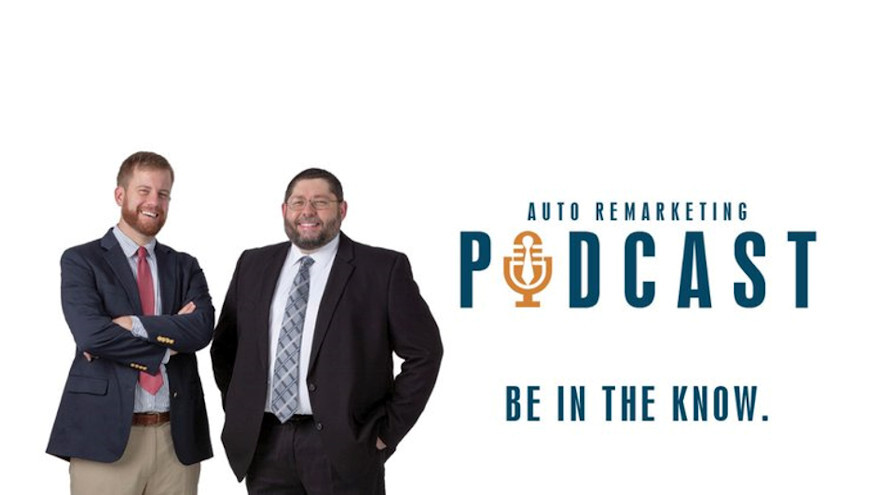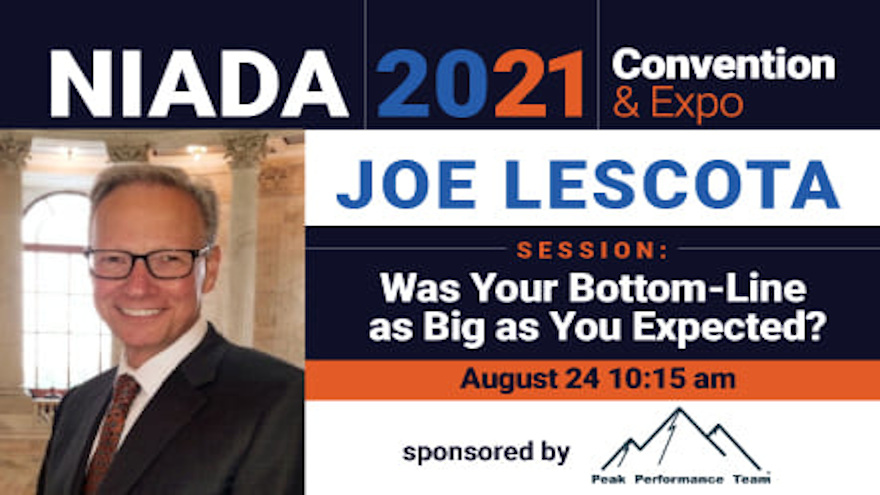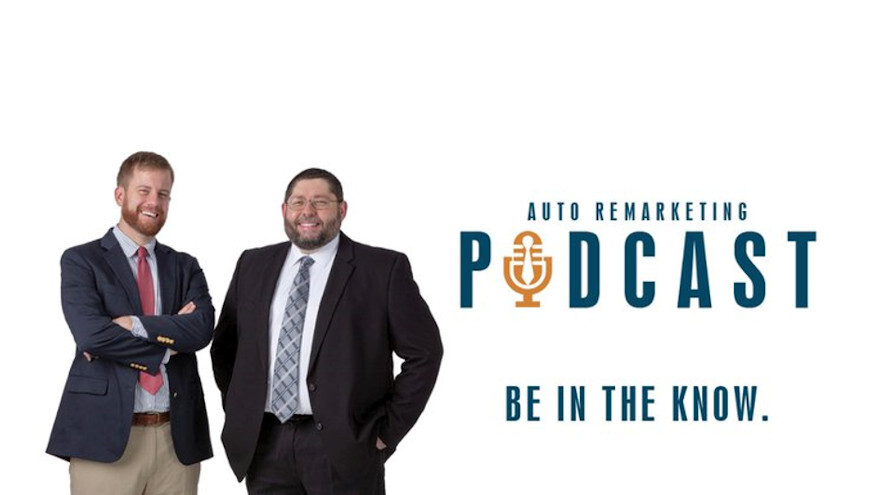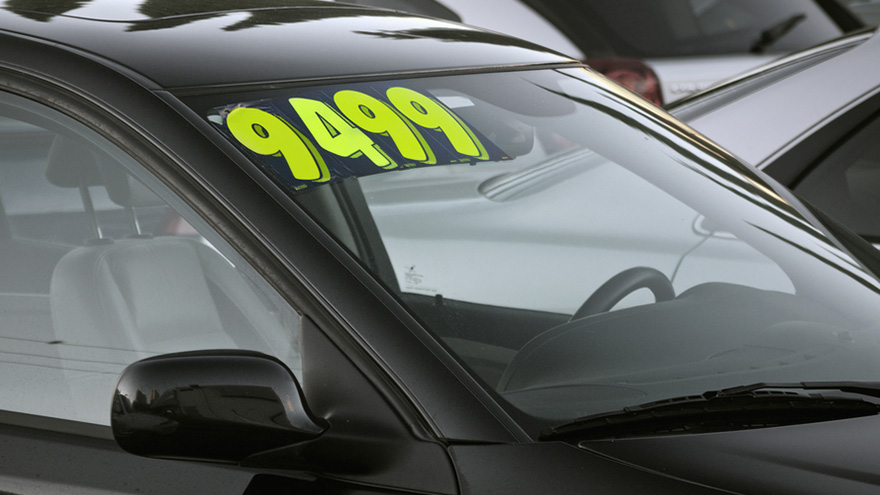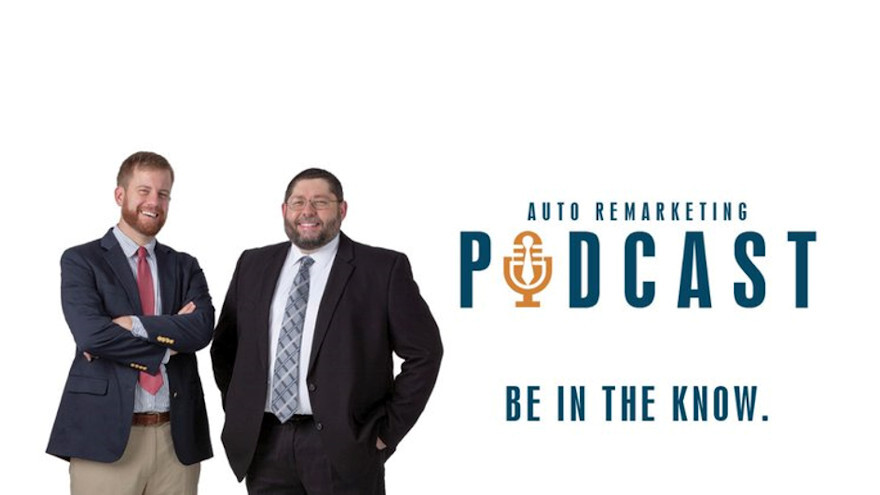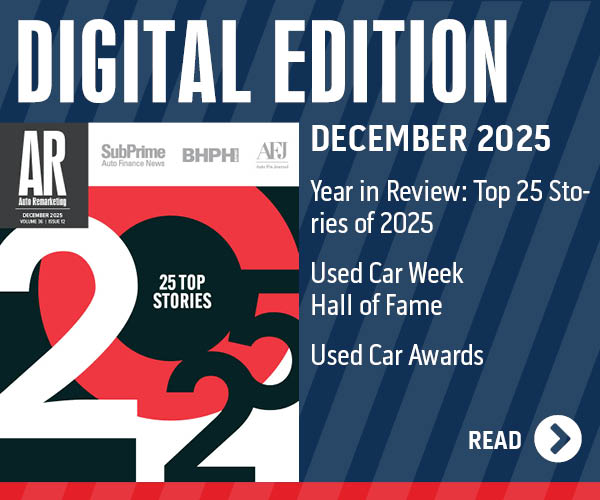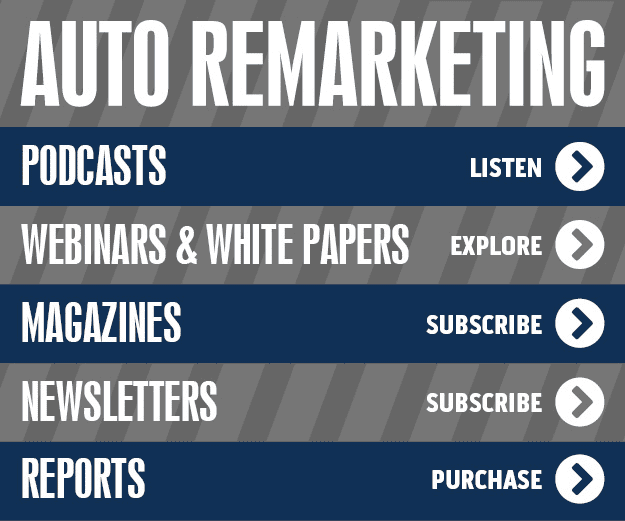I’ve been in the automotive industry for more than 15 years and, hands down, this is one of the most unusual markets I have ever seen. Despite predictions by industry experts that independent auto dealers would not fare well during the pandemic, they have largely survived and, in some cases, even thrived.
Studies by Cox Automotive reveal that dealer sentiment remains optimistic. The market outlook index was down slightly from Q2 to Q3, but still high and, more importantly, above levels recorded in Q3 of 2020 and 2019. The profits index also saw a slight improvement compared to the prior quarter, although independent dealer profit reporting was flat from Q2 to Q3; likely due to increased expenses versus Q2.
The year ahead presents some distinct challenges, but also some unique opportunities. And while there is room for growth, independents will need to continue to evolve in order to take advantage.
Key drivers for anticipated growth in the used car sector include fewer peer-to-peer transactions, resulting in greater volume for dealers. In addition, there’s a growing supply of used inventory in the 5-12 year-old range. This represents inventory that has aged out of a lot of franchise models, but still has plenty of service life left. For these reasons and more, NextGear Capital expects the industry will continue to thrive all the way through 2023.
Despite the macroeconomic factors that are beyond anyone’s control, independent dealers can still take command over how they navigate the road ahead. Here are a few areas where opportunities lie:
• Relentless sourcing: New-car production is low, there are fewer lease returns making it into the wholesale market, and fleets are competing for used car supply instead of adding to it. All of this is contributing to an inventory deficit in the used car sector. As a result, used-car dealers will want to have a firm grasp on what their customers are looking for and be relentless about finding it. That means expanding their sourcing horizons, whether it’s live or online auctions, other digital sources, the general public, other dealers or any other source.
• Take advantage of technology options: Dealers will want to embrace technology to tap into the rich data that’s available to guide their decision making. Using available digital platforms to determine the right inventory, where to find it and how much to pay for it in real-time, can lead independents to make smarter acquisition strategies and pricing decisions.
• Finding the right funding balance: Whether it’s operational working cash or floor plan financing, having cash on hand allows dealers to act quickly when they find the right inventory or opportunity to enhance their dealerships. Successful dealers minimize operational risks by balancing cash and credit to maintain and grow their businesses. An inventory strategy based solely on available cash will both limit purchasing power and the ability to make needed business moves, especially in an unpredictable environment with higher prices. The right floor plan can help dealers use the extra cash flow to improve infrastructure, hire a needed employee, invest in technology or otherwise put it to work to ensure they’re running efficient and profitable businesses.
Our data projects retail volume for independent dealers will grow in the coming year, and dealers will need to be ready to adapt toINA capitalize on this growth. Taking advantage of every source of available inventory, implementing new technology and ensuring they have the capital needed to do it all will be key. As today’s consumers look for more value-conscious buys, the independent dealer stands to gain.
Scott Maybee is president of NextGear Capital, one of the largest independent inventory finance companies in North America, providing flexible lines of credit for dealers to purchase used inventory at more than 1,000 auto and specialty auctions and other inventory sources throughout the United States. For more information, visit www.nextgearcapital.com.
There have been so many changes and unique circumstances that affect the market and your business. They must be considered as you plan for success in 2022.
What to do about it all?
First, plan to do something different — not just a little different but completely different. Doing a little more of the same may not net better results. Be willing to think outside of the box.
Here are a few tips to get you thinking:
First, collect ideas. No idea is bad in the first step. Accept all ideas then narrow them down. This is how the creative process works in order to think outside of the box.
As Carl Sewell mentions in Customers for Life, bring in outside eyes. Sometimes you are too close to the situation to see clearly. Also, outside eyes can bring more creativity.
Look outside of your own industry. If you are having trouble finding employees, watching what other dealers do may not help as much. Look at restaurants, grocery stores, or other businesses.
We have the midterm election in 2022. Expect more communication and energy than ever before. Even previously uniformed, uninterested people are turning their eyes and ears to politics. That makes it harder for your communication to get attention. If you are trying to dominate social media and other hyper-competitive media, try a different media. Become the media (email newsletters, print newsletters, customer appreciation events.)
Major tech companies have limited ad tracking. Ad tracking was one of the main reasons for the shift from other types of advertising to digital advertising. What did you do before? Some marketers got lazy on creativity after realizing you could put ads in front of hyper-targeted leads. Get creative again with fun, interesting, and heartfelt communications.
Several recent articles, including from The Wall Street Journal, have revealed that the chip shortage for new vehicles will continue long into 2022. The new-car shortage will continue. The used-car shortage will continue. Some dealers will have trouble finding inventory using the same methods that previously worked well. Do something different. Dealers approached us to ask about marketing directly to the consumer to buy vehicles. Buy-Here Pay-Here dealers are used to buying at auction because of all that it provides, but if you still do not have enough inventory, try something new. I can’t provide all of the details here but I know one dealer who is doing a consignment approach.
A variety of industries are having difficulty finding employees. Some blame fear of the virus. Others say paying people to stay home has caused a worker shortage. Hire from other industries. Hire based on attitude instead of experience. Use systems better so that existing employees can be more efficient. A well thought out CRM process and salesperson who has it mastered can work more leads than two average people.
Masks, no masks, vaccine mandate, no mandate. Enough has been covered on this.
Some people want to buy vehicles without setting foot on the lot. This desire already existed and was stimulated by the pandemic. It may not be the best idea to change your entire model, but you can consider having a process in place. We have clients who have launched a hybrid approach.
Here are trends that have not changed that could use a tune-up:
• Online video: I have been pushing this for years. Some of our clients do not want to be on video. They are just not comfortable. We hired actors and have earned tens of thousands of views (locally) for our clients for a fraction of the cost of nearly everything else.
• Reviews: If you do everything else right but your reputation is not stellar, you will lose business to a dealership that has a 4.7 Google rating or better. The excuse, “I just can’t get my customers to write a review” is no longer legitimate. The systems and training exist.
• The customer experience: Hire employees who like other humans. Perhaps that sounds cynical. In my live employee/management training, Become the obvious choice, I reveal how it is hardly possible to pretend to like your customers. You have to actually like them even when customers make it hard. Repeat purchases, referrals, and word-of-mouth have always been important. In a world where the average person is exposed to up to 10,000 advertisements a day according to Forbes, a positive customer experience is critical to earn repeat, referrals, and word-of-mouth business.
Recap: Plan to do something different. Think outside the box. Look outside your industry. Bring in another set of eyes.
Kenny Atcheson is the founder and president of Dealer Profit Pros and author of Marketing Battleground: How to Deploy Under-the-Radar Strategies to Explode Your Profits. Request a consult or learn more about his company’s marketing and advertising programs, customer service and sales training at www.DealerProfitPros.com.
In past years, I would have been advising you to use the down time in the last quarter of a year to make assessments about your operation. Under normal circumstances it is time to evaluate your staff, look into your underwriting and plan inventory levels for the coming year.
However, 2021 has not been “usual,” and 2022 is shaping up to be similar in the sense that next year will be different than what we have experienced in years past — like just two years ago.
Even with the huge changes many dealers had to endure to operate since COVID there are still many different topics to consider as we move toward a new year.
Talking inventory
I would say that for 2022 inventory will continue to be a shifting challenge. I would not buy “all I could get” simply because I feel the sands shifting and delinquencies are coming up. Sales have slowed from the craziness of the last 12 months and the “chip” shortage is continuing to get corrected. All that points to a continued improvement in availability of inventory which should allow for some price easing.
In times past where there would be issues getting inventory, I have seen dealers “grab” everything they could when all of a sudden there would be rigs you could buy. You would end up with too many of the same type vehicle, some would sell, the others get old. In some cases, we would pay a premium price for a few days when something was available only to see more of them the next week for less.
If the BHPH/LHPH dealers are seeing 5% to 10% increases in delinquencies, think about the big boys like Ally, Westlake, Santander and other of the factory finance company’s numbers changing, as well. I would not want to get caught with a bunch of high-dollar inventory and suddenly there is an abundance of availability at more reasonable prices. Keep buying and selling for sure but I would say the “full lot” rule has not been in effect for a while and it should stay that way into the summer.
Looking at infrastructure
How about your operation’s infrastructure? Have you been thinking about your DMS, CRM or Accounting software not really doing what you need? It could be time to consider paperless operations? Have you have thought there has to be a better way to manage your shop operations and have that integrated with your other software programs?
There are many ways to handle reconditioning and after sale issues that you could consider if you feel the shop is an out-of-control black hole of expense.
Are you still fighting with insurance, either at the point of sale trying to help a customer find some and not have the rates kill your deal? Aren’t you tired of the claim process and almost criminal payouts? Collateral protection or debt cancellation can really change the grind in dealing with insurance and wrecks.
What about car repairs after the sale? Are you buying a third-party service contract or do you have your own? There are good arguments for both methods but maybe now is a good time to research options and make a change for 2022?
Creating a reinsurance company is another move you should consider. Having a reinsurance company is not required for the products like CPI or a warranty but it is the important part of your business that maximizes those products. Are you looking at shelling out a bunch to Uncle Sam or I should say Sleepy Joe these days? Look into setting up a reinsurance company and you could seriously change the flow of your money and future wealth.
If you have not heard of or know what a 20 Group or dealer performance group is you should look into this. There are many successful dealership owners that will tell you it was the best thing they ever did. There is little you can do that is better than being part of a peer group that wants to help you succeed.
Making a list
There is a long list of items you should take time to consider if you want to improve the future of your BHPH/LHPH operation going forward. It is no different than if you want to be healthier or skinnier this summer, you have to make a change that will help you achieve the goal or you will not get there. You cannot get to Chicago if you are driving on Interstate 20 unless you change to another freeway. Improving the future of your business is the same.
Today is a great time to evaluate what you are not satisfied with in your operation and research making a change. You are not going to “blow up” everything and start over but you can make small changes that can have great effect on your future. If you would just stop drinking soda’s or stop eating bread you would be skinnier this summer, look at parts of your business and find something you can improve.
1. Maybe a different shop configuration
2. Look at underwriting and speeding up or slowing approvals depending on what improvements you need. (Speed up because it is taking to long for customer satisfaction or slow down to be sure who you are dealing with)
3. Is it easy for your customers to pay payments (What tools do the collectors have to get money?)
4. Do you have a related finance company (RFC)?
5. Do you feel lost when it comes to marketing online?
I am in different dealerships almost every week, some for software conversions, others for consulting and procedure writing. In many cases when I go to a dealership to consult, I am doing a review of what is being done and we discuss why. I point out things I would change and often I hear “we knew this.” I become the kick in the butt they needed to get moving, I provide the owner a plan to implement changes they already felt they should do and off they go.
You have heard and seen all the motivational quotes about it is up to you to change. Vision without plans are just dreams. Everyone want to be a lion until it is time to do lion stuff. Always be learning.
If you need help with making changes or not sure what to change, I can certainly help. Call me anytime at (479) 970-4049.
If not me there are many mentors out there and always the peer groups will be a tremendous resource. Have a great holiday season and let’s get ready to make 2022 a year of improvements.
Gene Daughtry has been in the dealership part of the automobile business since 1990. He has created four different BHPH dealerships from startup to mature portfolios, all with complete service facilities. Currently, Gene is the senior consultant for AMS Consulting, part of Auto Master Systems Dealer Management System. Gene does procedure writing, operations training, consulting and offers AMS Digital Marketing and AMS Analytics to BHPH and LHPH dealers. You can reach him at [email protected] or call (479) 970-4049.
For several months now, Bill Elizondo has been back on the road hosting 20 group meetings in his role as senior moderator and consultant at National Independent Automobile Dealer Association.
In this episode of the Auto Remarketing Podcast, Elizondo shared highlights of conversations with operators, how they’ve navigating current challenges and their mood toward the future.
To listen to the conversation, click on the link available below, or visit the Auto Remarketing Podcast page.
Download and subscribe to the Auto Remarketing Podcast on iTunes or on Google Play.
More dealers advertise using online video but are unsure of the most effective strategy. One of the most important things to know is that online video is not television. Do not take your television commercial and slap it on YouTube. There is a reason people use DVRs, go to the restroom during commercials, or take two minutes to grab chips and a drink while ads run.
Video messages that work well in one area of the country may not be as successful in a different area. Take advantage of your local knowledge.
You do not have to spend tens of thousands of dollars on production. Some of the more popular organic videos on YouTube were shot with a cell phone. That is not necessarily what you need, but it demonstrates that one size doesn’t fit all.
Some advertisers have cut back on television ads because of other available video delivery systems, not because video stopped working. Less expensive and better targeted distribution has allowed David to compete with Goliath.
Video can be engaging. A person’s personality comes through in a video more than other delivery mechanisms. Video is closer to real life because you see and hear the person delivering the message — which makes it easier to trust the messenger (or advertiser). A video can make a difficult topic easier to understand.
6 online video styles and tips
1. Talking Head Video
Turn on the camera and talk. Not much fancy equipment is needed. Cell phones have good video cameras. Get the lighting right and have a good microphone.
If the person on camera is someone who is part of the dealership, it can create a personal connection. On television Wendy’s founder Dave Thomas did this. Mike Lindell of MyPillow is the recent version.
An actor/actress can be used, but be careful they don’t sound too commercial. They may need coaching to sound like someone at the business and NOT an actor/actress.
2. In-House Talent Video
The pros and cons of this style video are the same as the talking head video with a few differences.
It takes more time and effort than a talking head video. You may walk around, which requires someone to film. The lighting and audio will be more challenging than in a more controlled environment such as the manager’s office.
This video may be more interesting than a talking head video because as you walk around, the environment changes. There is more movement.
3. In-House Fun Videos
You will have to come up with ideas.
You need someone with personality to make it fun. Check out the Will it Blend series on YouTube. Blendtec has earned nearly 300 million views. That has led to blender sales for a company that may not have been able to afford television commercials.
4. Talent Produced Fun Videos
Purple, the company that makes the unique Purple mattress, just recently started airing television commercials. Their videos have been online for a long time. They are fun, engaging, and hilarious.
These types of videos can be very expensive. I have first-hand knowledge that Purple’s videos were extremely pricey to create.
5. Animated Videos
Technology is extremely helpful here. The only human portion needed is for the voice. That can be hired out. Technology does the rest.
You still have to find a decent voice.
Price is fair. The cost is less than having a television commercial created, but more than a talking head video.
6. Human and Animated Video Combination
Last year, I interviewed Dennis Prager, founder of Prager University. I asked Dennis about the evolution of their video style. Currently, their videos have over 5.3 billion views. Dennis revealed that their videos were not always animated. They used to have a human presenter with an occasional slide or picture popping up on the screen at appropriate moments. A photographer who owned the rights to a picture of a kangaroo threatened to sue PragerU for using a photo without permission (Dennis said it was an honest mistake). This led to the switch to animated videos. In my interview, Dennis said when they switched their videos to animation they increased their viewership by 100 times.
In this scenario, animation is definitely a better option, in part because difficult topics are explained. Animation makes them even more interesting and easier to understand.
Consider using the styles of videos that make the most sense for you. Talk to someone who can listen to your ideas and help you choose. Do not get too hung up on what type of video you need to do. Just do something.
Kenny Atcheson is the founder and president of Dealer Profit Pros and author of Marketing Battleground: How to Deploy Under-the-Radar Strategies to Explode Your Profits. Kenny teaches workshops and speaks at conventions and 20 Groups. His company offers several marketing and advertising programs (including help with video content), customer service and sales training. His website can be found at www.DealerProfitPros.com.
Experts from AiM Mobile Inspections are seeing history repeat itself.
And it could mean even more headaches for independent and buy-here, pay-here dealerships already having trouble finding inventory.
AiM Mobile Inspections is spotting flood-damaged vehicles surface because of Hurricane Ida that left a destructive path stretching from the Southeast to the Northeast, beginning on Aug. 29 when it roared in from the Gulf of Mexico.
“It’s like 2011 all over again with flood-damaged vehicles trickling into the used-car marketplace, except this year has been especially tough on dealers and car buyers,” said Eric Widmer, co-founder and senior vice president of sales and marketing at AiM.
“With the recent shortage of new vehicles, the used-vehicle supply chain has been the industry’s go-to marketplace, but now, it’ll be constricted even more,” Widmer continued in a news release. “Dealers and consumers should be on alert so they don’t have the wool pulled over their eyes on a flood-damaged vehicle.”
AiM acknowledged that flood-damaged automobiles might wind up in the used-vehicle market in auctions and on dealer lots all around the country as desperate owners with a lot of equity in their vehicles try to salvage whatever value they can from a vehicle inundated by floodwaters.
“Used-car shoppers need to know how to spot flood damage vehicles no matter where they live, because these cars are going to end up on a dealer lot from coast to coast,” said AiM Mobile Inspections’ Jason Soriano, who has nearly 30 years of experience inspecting vehicles. “Flood damaged cars are never the same as before.”
Soriano recollected more than a decade ago when was inspecting cars at Port Newark in New Jersey after Superstorm Sandy struck.
“I found a fish under a backseat,” Soriano said. “It was pretty obvious sign the car had been under water.”
AiM Mobile Inspections pointed out that many states issue a flood or salvage title to a vehicle that has been submerged or damaged by flooding; information that can be found on a vehicle history report.
However, the firm reiterated that some sellers may try to unload their car or truck before a flood or salvage title appears on a vehicle’s history report.
So a fishy unit doesn’t end up in your inventory, AiM offered several suggestions that are not only geared for short-term acquisition strategy but also for the rest of the year and beyond since the inspection company is projecting the vehicles damaged by Hurricane Ida could surface well into 2022.
To combat this possibility, Soriano offered these warning signs to help identify flood damage in a vehicle:
• A musty odor in the vehicle, which may be from moldy carpeting or padding. If possible, pull up the carpeting to see how far water may have risen in the vehicle, and also if any moisture remains.
• Mud in the seat belt tracks or seat belt tensioners.
• Water or condensation in the headlights or taillights. Soriano notes this could also be due to an accident, but water in these areas could also be a tip-off to flood-related problems.
• Water in the spare tire well in a vehicle’s trunk. “Water in the spare tire well, is a sign we need to look a little further,” said Soriano.
• A sagging headliner in the interior, particularly on a late-model vehicle.
• Corrosion in the vehicle’s undercarriage, such as on brake lines or around the fuel tank. When corrosion appears near the top of the springs or shock towers are corroded, these are signs of flood-related damage.
“A car’s engine, electronics, fuel system, airbags and brakes are all extremely susceptible to flood water,” Soriano said. “It’s extremely important to find any water damage before you invest your money in a used car, and a professional inspection will help identify flood damage no matter how a seller tries to hide it.”
AiM and its team of more than 600 full-time inspectors review vehicles throughout the United States, providing detailed condition reports for clients ranging from consumers, dealers and auctions to manufacturers. AiM’s independent, 150-point inspection is designed to “clearly identify” problems on vehicles for buyers and sellers.
The company added that it has instructed its inspectors to pay particular attention to flood damage due to this year’s severe weather.
The National Independent Automobile Dealers Association happily announced this week that Joe Lescota is back.
The auto retail expert and acclaimed dealer educator will once again share his knowledge, experience and insights with independent dealers from across the nation at the 75th annual NIADA Convention and Expo, coming up on Aug. 23-26 in San Antonio.
And, according to NIADA, dealers could not be more thrilled. The association shared multiple enthusiastic reactions to the announcement via a news release.
“Need to be inspired? Need direction? Need a kick in the behind? Joe’s the guy,” said Brenna Stansberry, co-owner and general manager of Park Marina Motors in Redding, Calif., and an NIADA Certified Master Dealer. “So glad he’s back!”
Lescota has provided NIADA members with inspiration, direction and actionable ideas, techniques and strategies for sustainable success for some 20 years.
As chairman of Northwood University’s Automotive Marketing Department, Lescota helped create the Certified Master Dealer program in 2001, and was the lead CMD instructor for 14 years.
Lescota served as NIADA's director of dealer development from 2012 to 2017.
Darla Booher, owner of Deal Depot in Greer, S.C., and NIADA’s 2015 National Quality Dealer, said Lescota’s guidance as CMD instructor “helped me get my business on track.
“I’ve been a sponge ever since,” she said. “If Joe’s speaking, I’m listening.”
Lescota will be speaking twice at the NIADA Convention, leading off the education agenda on Aug. 24 with a session titled “Was Your Bottom Line as Big as You Expected?” and closing it two days later with “Manage Your Inventory to Maximize Your Investment.”
Both sessions are sponsored by Peak Performance, and NIADA said both segments are expected to draw big crowds.
“Joe is a genuine auto industry rock star who packs rooms whenever he speaks,” NIADA vice president of industry insights and analysis Larry Dixon said. “His sessions are a must-see for any dealer who wants to run a more efficient and profitable dealership. My advice: Get there early to make sure you get a seat.”
Lescota said his sessions are “not about today – they’re about tomorrow.”
He added, “Right now, it’s a seller’s market/ But as we all know, what goes up must come down.
“So I’m looking forward to getting back and assisting independents in the arena of education and preparation, from a financial standpoint and a management/leadership standpoint,” he went on to say.
NIADA highlighted that Lescota is among a long list of prominent names scheduled to speak at the used vehicle industry’s premier event.
The education agenda — which includes 60 sessions — features:
— Keynote speaker, Pro Football Hall of Famer Michael Irvin
— NABD founder Ken Shilson
— “Bulldog of the Service Drive” Chris Collins
— Attorney Steve Levine
— Doug Hadden of ACV Auctions
— Agora Data’s Chris Barry
— Financial specialist Mark Burkholder
— Independent dealer and marketing expert Tracy Myers
The association also mentioned the event’s expo hall will be packed with more than 150 exhibitors offering the latest products and services designed to help dealerships succeed.
The event includes award ceremonies, networking and special events, celebrating NIADA’s 75th anniversary.
For more information about the convention or to register, visit niadaconvention.com.
Veteran buy-here, pay-here dealers already might understand the complexities and potential gains of a well-run reinsurance program. New operators or other dealerships might think that the previous sentence had a typo.
In an effort to help the whole industry, we dedicated this Auto Remarketing Podcast episode to be “Reinsurance 101,” asking Shaun Petersen, who is executive vice president and chief legal officer at Buckeye Dealership Consulting, to take us through the basics and benefits of reinsurance.
To listen to the episode, click on the link available below, or visit the Auto Remarketing Podcast page.
Download and subscribe to the Auto Remarketing Podcast on iTunes or on Google Play.
“It’s a perfect storm of used-vehicle demand meeting a perfect drought of used-vehicle supply.”
That was the word from KAR Global chief economist Tom Kontos in his latest update regarding current used-vehicle market conditions.
Consumers are now learning what used-vehicle retailers have known for eight months or more. Many new-vehicle models are in short supply as the result of computer chip shortages and other pandemic-related supply shortages.
When consumers consider a used-car purchase, they find their choices limited as fewer off-lease, off-rental and repos units are returning to the wholesale marketplace. All these inventory shortages mean that the vehicles that manage to roll across the auction block are fetching record-high prices. Consumers are faced with limited offerings and higher prices.
As March ended, prices of used cars and trucks of up to eight years old that were sold at wholesale auctions rose by 3.1% from the prior week, according to data by J.D. Power. Tax season, bolstered by $1,400 federal stimulus checks reaching consumers, saw prices spike by an additional 8.3% in the first weeks of April. Compared to early March 2020, just prior to the COVID-19 Pandemic shutdowns, prices spiked by 20% and higher in certain market segments.
Inventory is hard to find and expensive when you do. For buy-here, pay-here dealerships and subprime finance companies, this makes the high-risk business model even more challenging. Prices are rising, but wages are not. Because of the increased values, dealers are left with difficult choices. They can’t raise a monthly payment to cover the increased cash-in-deal, because their customers simply don’t have it in their budgets. Lengthening the term of the loan always adds greater risk to the portfolio. Getting larger down payments is an option, but this tends to limit the number of vehicles a dealer can sell.
BHPH and subprime financing have always been a game of brinksmanship. Sell too many cars, and you outpace your capital. Don’t sell enough vehicles, and your business tends to stagnate and cash flow dwindles. There are options out there when it comes to finding right-priced inventory that fits your business model, and dealers who are able to locate inventory right for them, timely, in the quantities needed will definitely have an advantage over their competitors.
According to Tom Stewart, chief executive officer of Auction Management Solutions, a consultancy serving about 20 independent auto auctions and smaller chains, said his portfolio of auctions have an across-the-board 30% decline in consignment volume.
“That’s not just our clients, it’s across the country,” Stewart said. “These auctions have 70-80% conversion rates.”
Stewart travels across the country regularly and noted that not only are rental vehicles in short supply, but those also used in fleet may have 40,000 to 50,000 miles on them. He said he’s seen recent articles where rental cars in states with high tourism cost travelers $500-$700 a week and more.
Dealers ought to pay close attention to these challenges, because they are likely to linger for several years, if not well into 2025.
The National Auto Auction Association held a 2021 Economic Outlook Webinar in mid-April with KAR Global’s Kontos, and Jonathan Smoke, who is the chief economist at Cox Automotive. Both agreed that used vehicle prices will remain high for the foreseeable future. While it’s always difficult to make predictions so far out, Kontos pointed out some obvious pressures on the used-vehicle supply.
Rental car companies decreased the size of their fleets as the pandemic took hold. While predictions of a massive oversupply were overestimated, the companies did their best to manage fleet downsizing.
“Rental fleets have been downsized and we’ve heard reports that rental cars simply are unavailable, or that travelers will pay more for their rental cars,” Kontos said. “With manufacturers facing computer chip shortages, they will devote what is available to retail to support their dealer networks. It may take a couple of years for fleet sales to return to normal.”
As rental car companies re-fleet and those vehicles then return to market in 2022 and 2023, Smoke said, the dramatic decline in new vehicle sales in 2020 will mean far fewer off-lease vehicles returning to market in 2023 and 2024.
“It could well be 2025 before we see a market like we had in 2018-19,” Smoke said.
There are two ways to approach this perfect storm for finance professionals — adjusting the business model and finding new sources for right-priced vehicles. Both pose significant challenges.
Adjusting the business model
As supply issues affect pricing, it is the lower segment of the inventory market that will be squeezed. The 7- 8-year-old $2,500 wholesale vehicle simply doesn’t exist right now. That car now costs $4,000 to $4,500. What hasn’t changed is the quality of that unit. It’s still a $2,500 car that just costs twice as much. If a dealer has $300 a month customer, there’s no magic that will convert them to a $400 a month customer.
Dealers may have to shift their business models, tighten their underwriting, and look for better quality customers. More will have to be done up front to verify stips, gather references, and intensify their due diligence before entering the contract. Obviously, using GPS technology and the multitude of valuable analytics it provides is a must in this current environment.
With more cash at risk on the street, you’ll want to use the data the GPS technology provides to locate collateral when a recovery is warranted, get notifications when a unit enters a impound lot, or when a vehicle has become abandoned or disabled. Protecting your assets upfront helps to prevent back-end losses.
Finding new inventory sources
Dealers should be working much harder to find inventory to fill their lots, and one thing is clear — they are.
One of the key ways to find inventory is to ask for it. Having signs at the dealership letting people know you’d like to pay top dollar for their used vehicle is a time-tested method. Expand the reach of your sign by posting it on social media, Craigslist, Facebook, and anywhere else you think will work. Remember today you are now in competition with chains like CarMax and other dealers so be prepared to offer good money and make the process as easy as possible.
Search for sale by owner vehicle on Facebook Marketplace and Craigslist and don’t forget the local newspapers. At this point, looking for right-priced inventory in the numbers you need will require a full-court press.
Wholesale auctions are still the go-to, as well as public auctions. Most dealers have accepted buying online from the traditional Manheim, ADESA, smaller chains as well as ACV Auctions and Backlotcars.com have made the task easier and these vehicles come with very good condition reports and most report lower fees and relatively easy arbitration. Dealers have also expanded their reach.
Some dealers are going out 1,000 miles and eating the transportation costs.
With the advent of online sales and 20-minute auctions while a trade-in is still on a dealer’s lot, have resulted in a decline in the number of independent wholesalers in the marketplace. There are still some out there. Major wholesalers like Robert Hollenshead Auto Sales have 1,152 units in his wholesale inventory and runs vehicles at Manheim Pennsylvania 52 weeks a year. There are others.
We have heard some dealers looking across our northern border to secure inventory. The current U.S. dollar exchange rate with the Canadian dollar is $1.23. Of course, if you purchase a Canadian vehicle there may be homologation issues that will have to be addressed. There are companies that assist with the legal importation of the vehicles as well as the auctions.
Another, riskier, source of inventory is a project vehicle.
Vehicles that need a transmission, engine, or body work can offer an opportunity. Even salvage units may provide an opportunity. Of course, salvage-titled vehicles will raise eyebrows, and legal and regulatory compliance and full disclosure is a must.
Taking on a project vehicle poses challenges. Dealers with service bays have an advantage, but when purchasing the vehicle, it’s vital to know with certainty how much money it will take to get the vehicle ready for sale. Poorly estimating expenses will quickly exacerbate losses. Project vehicles are not for the uninitiated but can be another inventory source for many.
David Meyer is the president of Advantage GPS, an industry leader in the automotive telematics and analytics industry. Named one of Industry Era’s 2019 Best CEOs, he has more than 28 years of automotive retail, finance and telematics experience. He has been a dealer principal, manager, and understands the challenges and opportunities faced by today’s modern automotive retailers. Learn more about Advantage by contacting the company at (800) 553-7031, https://advantagegps.com or [email protected].
The exciting part of tax season is retailing vehicles and filling the portfolio of paper to generate payments for many months to come.
The complicated part of tax season is making sure your business made all of its necessary filings and payments to fill state and federal tax collectors.
In an effort to understand the complexities of tax filing amid the pandemic as well as the recent winter storm to hit Texas, RSM tax partner John Lisi joined the Auto Remarketing Podcast to discuss some potential strategies.
To listen to this episode, click on the link available below, or visit the Auto Remarketing Podcast page.
Download and subscribe to the Auto Remarketing Podcast on iTunes or on Google Play.


